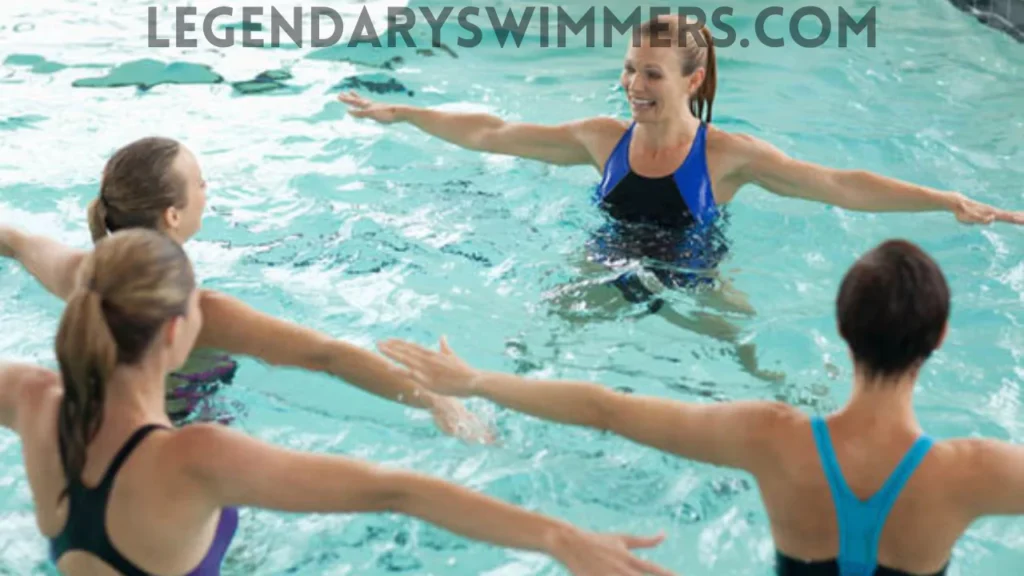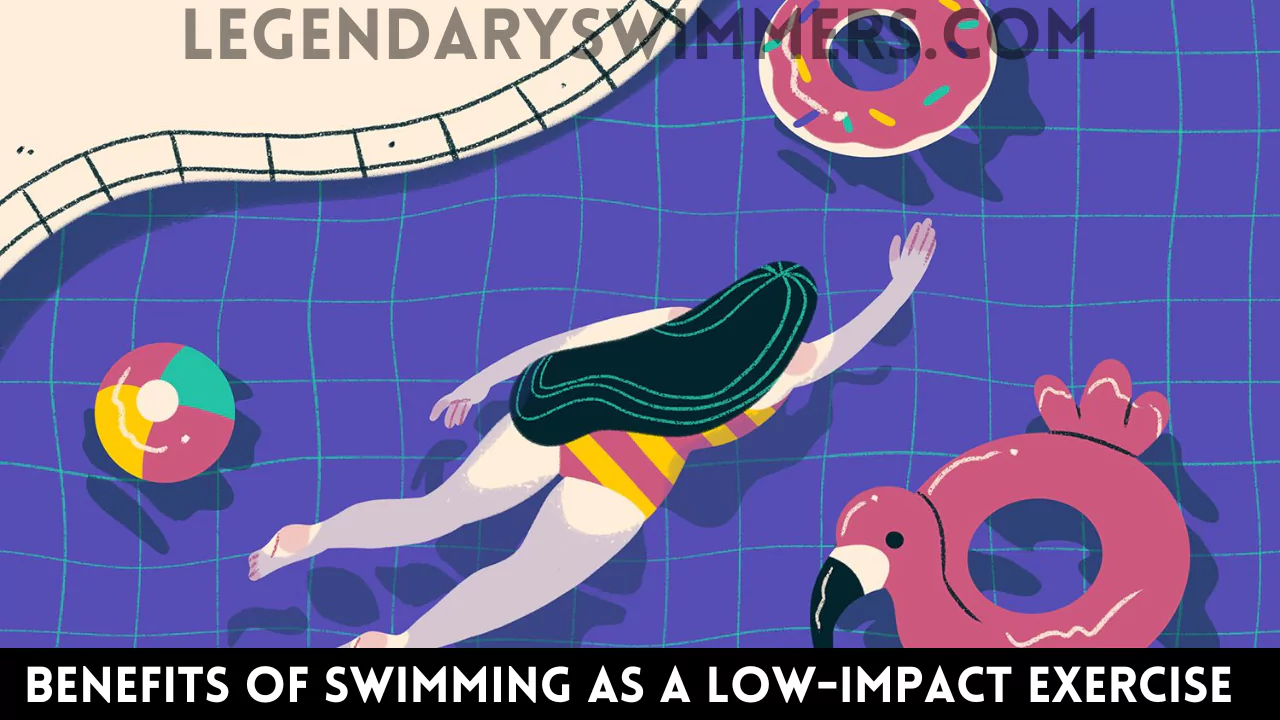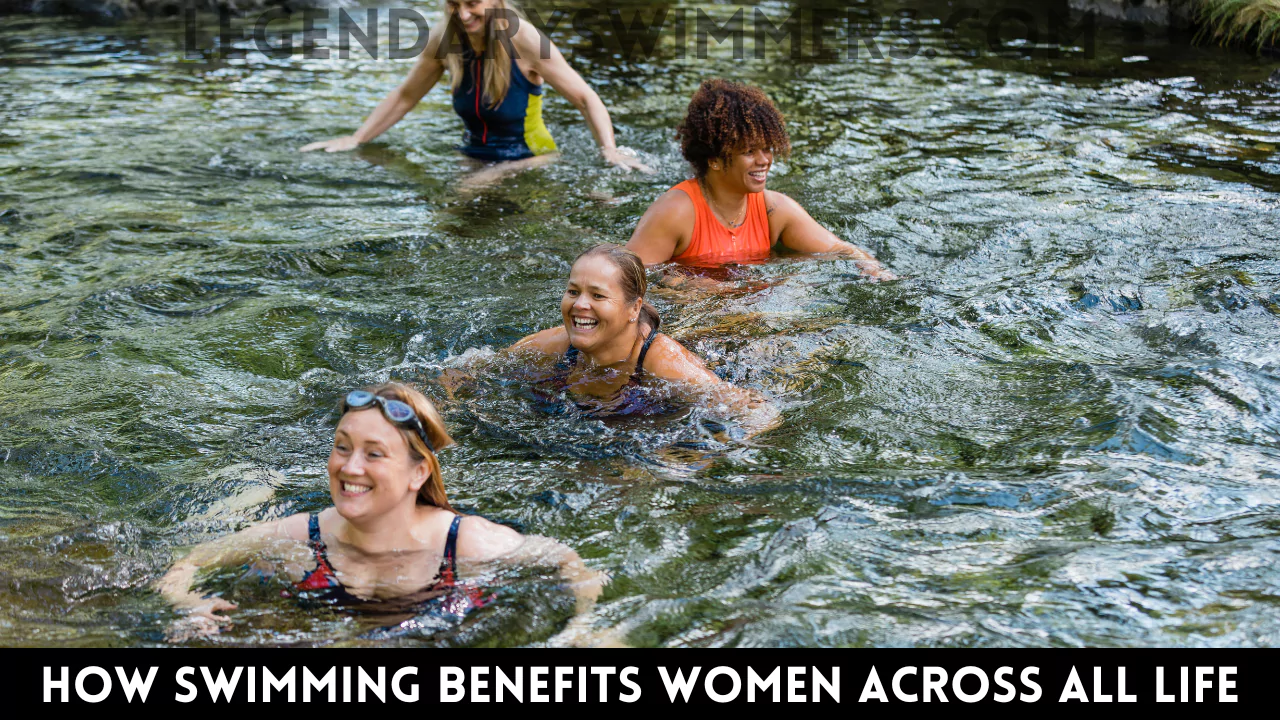
Why Swimming is a Great Low-Impact Exercise for Women
- Updated:
The Arthritis Foundation highlights that low-impact exercises, such as swimming and cycling, are recommended for people with arthritis to help improve joint function and reduce pain. Arthritis Foundation – Exercise
Let’s dive into the details and explore why this aquatic activity is so beneficial.
1. Understanding Low-Impact Exercise
Low-impact exercises are gentle physical activities on the joints, minimizing the risk of injury and strain. These exercises involve movements that do not place excessive force on the body, making them suitable for individuals with joint issues, those recovering from injuries, or anyone seeking a gentler form of fitness.
Comparison with High-Impact Exercises
High-impact exercises can be effective for building bone density and cardiovascular endurance, but they often come with a risk of joint and muscle strain. Swimming, by contrast, offers a comprehensive workout without the associated impact, making it a preferable choice for those seeking to avoid stress on their bodies.
Why Swimming is a Great Low-Impact Exercise Option

Low-impact exercises, like swimming, are beneficial for several reasons:
1. Reduced Risk of Joint and Muscle Strain:
Low-impact exercises are designed to minimize the stress placed on your joints and muscles. Unlike high-impact activities, which can put significant pressure on your joints and lead to strain or injury, low-impact exercises provide a gentler workout. This makes them particularly valuable for individuals who are prone to joint issues, such as those with arthritis or previous injuries. Swimming, for example, allows for a full-body workout without putting undue stress on the knees, hips, or back.
2. Suitable for All Fitness Levels and Ages:
One of the standout features of low-impact exercises is their versatility. These exercises can be adjusted to fit various fitness levels, from beginners to seasoned athletes. For example, a novice can start with gentle water aerobics, while a more advanced swimmer can engage in rigorous lap swimming. This adaptability also means that low-impact exercises are suitable for people of all ages, including older adults who may need to avoid high-impact activities due to decreased bone density or joint flexibility.
Statistics: The CDC notes that low-impact exercises are beneficial for older adults as they help maintain strength, balance, and flexibility, reducing the risk of falls and injuries. CDC – Older Adults and Physical Activity
3. Enhanced Cardiovascular Health and Muscle Strength:
Despite being low-impact, these exercises still provide significant cardiovascular and muscular benefits. Activities like swimming are effective in improving heart health, increasing lung capacity, and building muscle strength without the jarring impact on the body. This balanced approach ensures that you receive a comprehensive workout that supports overall well-being.
Statistics: According to the AHA, low-impact activities like swimming can improve cardiovascular health without putting excess strain on the body. American Heart Association – Physical Activity
2. Why Swimming is the Perfect Exercise for Women of All Ages

When you swim, almost every muscle group is activated. The resistance of the water forces your muscles to work harder, leading to improved strength and tone. From your arms and shoulders to your core and legs, swimming ensures a balanced workout. For example:
- Arms and Shoulders: Swimming’s repetitive strokes, whether freestyle, backstroke, or breaststroke, continuously work the deltoids, biceps, and triceps, enhancing upper body strength and endurance.
- Core Muscles: The twisting and turning motions required to propel your body through the water engage the core muscles, including the abdominals and obliques, promoting a stronger and more stable midsection.
- Legs and Glutes: Kicking motions used in various strokes like the flutter kick or dolphin kick target the quadriceps, hamstrings, calves, and glutes, contributing to toned and powerful legs.
How Swimming Helps with Conditions Like Arthritis or Joint Pain
Swimming can be particularly beneficial for women suffering from arthritis or joint pain. The low-impact nature of swimming alleviates pressure on the joints while allowing for effective movement and exercise.
The Mayo Clinic notes that swimming is an excellent exercise for maintaining cardiovascular health, muscle strength, and flexibility, which are crucial for older adults to stay active and independent.
Benefits for Injury Rehabilitation
For those recovering from injuries, swimming offers a gentle yet effective way to regain strength and mobility without exacerbating the injury. Swimming also encourages a full range of motion, which is crucial for rehabilitation and helps prevent stiffness and further injury.
Swimming’s Role in Burning Calories and Boosting Metabolism
Swimming is an excellent calorie-burning exercise, helping with weight management and fat loss. The combination of resistance and aerobic exercise makes it a potent tool for boosting metabolism.
Different swimming strokes burn varying amounts of calories. For instance, the butterfly stroke burns more calories than the breaststroke due to its intensity and full-body engagement.
The Calming Effects of Water and Rhythmic Exercise
The sensation of being in water, combined with rhythmic breathing and movement, creates a meditative effect, helping to calm the mind and relieve anxiety.
3. Swimming for Different Life Stages
For young adults and college students, swimming provides a solid fitness foundation that is essential during these formative years. This stage of life is often marked by a hectic schedule filled with academic responsibilities, social activities, and the beginning of a career. Amidst all this, maintaining physical health is crucial, and swimming offers an ideal solution.
According to research, physical activity, including swimming, can increase the production of endorphins, serotonin, and dopamine—chemicals in the brain associated with mood enhancement. These “feel-good” chemicals help reduce stress, anxiety, and depression, which are common challenges for college students(MDPI, USMS).
Balancing Swimming with Other Activities
Incorporating swimming into a busy schedule can effectively balance physical activity with academic and social commitments, ensuring holistic well-being. By integrating swimming sessions into your routine, you can maintain a healthy lifestyle without sacrificing other essential activities. The adaptability of swimming, with its varied intensity levels and flexible timing, makes it an ideal exercise to fit around studies, work, or social engagements. This balance not only promotes physical fitness but also aids in stress management and mental clarity, which are crucial for maintaining overall health during busy periods.
Older Adults
Benefits for Maintaining Mobility and Flexibility
Swimming is particularly beneficial for older adults, offering a gentle yet effective way to maintain mobility, flexibility, and muscle strength. As aging bodies often face challenges like joint stiffness, reduced bone density, and decreased muscle mass, swimming’s low-impact nature helps alleviate these issues without placing undue stress on the joints. The buoyancy of water supports the body, allowing for a wider range of motion, which is crucial for preserving flexibility and preventing injuries. Regular swimming also enhances cardiovascular health, which is vital for longevity, and helps manage age-related conditions like arthritis, thereby improving overall quality of life.
The Arthritis Foundation recommends swimming as a low-impact exercise that is gentle on the joints and beneficial for those with arthritis, which is common in older adults.
4. Tips for Selecting a Pool and Swimwear
Choosing the right pool involves considering factors such as location, cleanliness, and facilities. For swimwear, it’s essential to select comfortable and well-fitting gear to enhance your swimming experience.
Importance of Goggles, Swim Caps, and Proper Attire
Goggles protect your eyes from chlorine, preventing irritation and allowing you to see clearly underwater. Swim caps keep your hair manageable, reducing drag and ensuring that your hair doesn’t interfere with your swim. Proper swimwear enhances comfort and performance, providing the right level of flexibility and support for your strokes. Additionally, well-chosen swimwear can improve hydrodynamics, allowing for smoother, more efficient movement through the water.
Expert Recommendations:
 Speedo Unisex-Adult Swim Goggles Mirrored Vanquisher 2.0
Speedo Unisex-Adult Swim Goggles Mirrored Vanquisher 2.0
Options for Swim Lessons and Self-Learning Tips
If you’re new to swimming, consider taking lessons from a qualified instructor. Alternatively, self-learning tips and resources can help you get started. Begin with shorter, less intense swim sessions and gradually increase duration and intensity to build endurance and skill safely.
Set specific, measurable, and achievable goals to track your progress and stay motivated. Whether it’s improving your stroke technique or increasing your swim distance, clear goals can guide your training.
Find a swim schedule that works for you, whether it’s early morning or late evening. Plan your workouts to fit into your daily routine and make swimming a regular part of your life.
Finding Convenient Swim Times and Locations
Choose pools that offer convenient hours and locations. Many gyms and community centers have flexible swim times to accommodate different schedules.
5. FAQs
Q: How Often Should I Swim to See the Benefits?
A: For noticeable benefits, aim to swim at least 2-3 times a week. Consistency is key to achieving and maintaining fitness goals.
Q: Why is Swimming Considered a Full-Body Workout?
A: Swimming engages multiple muscle groups simultaneously, providing a comprehensive workout that improves strength, endurance, and flexibility.
Q: Can Swimming Help with Specific Health Conditions?
A: Yes, swimming can help with conditions such as diabetes, asthma, or back pain by improving overall fitness and cardiovascular health.
Q: How Can I Make Swimming More Enjoyable?
A: Make swimming enjoyable by setting personal goals, varying your routines, and swimming with friends or joining a swim team.
Conclusion
Swimming offers a multitude of benefits as a low-impact exercise, making it an excellent choice for women of all ages and fitness levels. Its ability to provide a full-body workout while being gentle on the joints makes it ideal for maintaining health and wellness. Whether you’re looking to improve your cardiovascular health, manage your weight, or simply enjoy a relaxing and effective workout, swimming has something to offer.
Explore our wide range of swimming products and services to enhance your aquatic experience. From Kiefer rings for hydrotherapy to the latest in wetsuits and swim gear, visit Legendary Swimmers to find everything you need to start your swimming journey today. Dive in and experience the benefits of swimming firsthand!
References:
- National Institute on Aging – Exercise and Physical Activity
- Mayo Clinic – Benefits of Swimming
- Arthritis Foundation – Exercise and Arthritis

Natasha Nicole Leyva
Hi, I’m Natasha—swimmer, coach, and aquatic fitness enthusiast. My journey began in New Zealand after a professor recommended swimming to help with a knee injury. The low-impact nature of swimming worked wonders, and it quickly became my favorite form of exercise. This passion grew into a thriving swim academy, and soon, requests for aquatic fitness classes started pouring in. After becoming certified, I realized how powerful water workouts could be for recovery and fitness. Now, I share my expertise here to help others experience the benefits of aquatic movement—whether for recovery, fitness, or fun!








